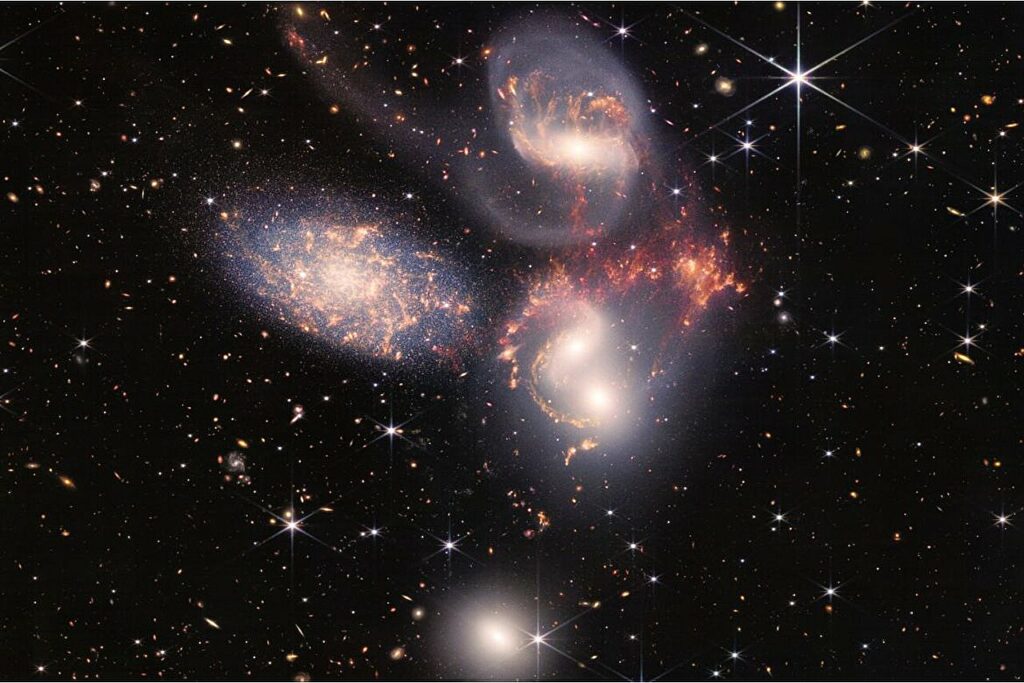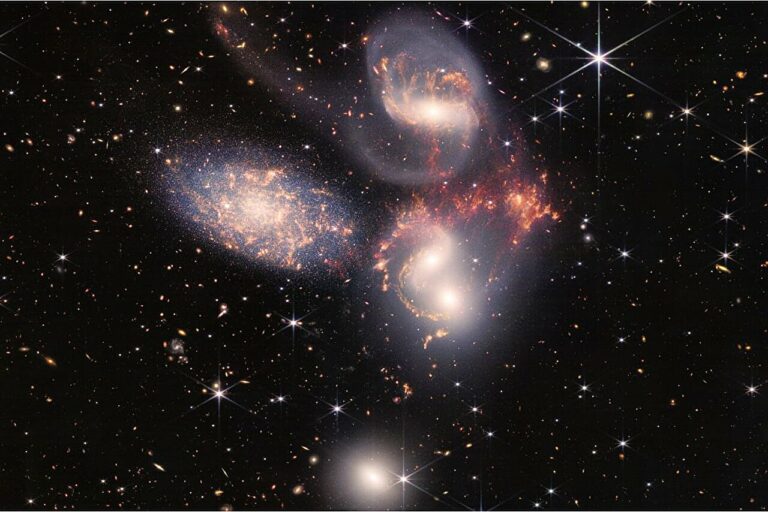Luminous Galaxies Challenge the Properties of Dark Matter
Over the last 18 months, the James Webb Space Telescope has provided remarkable visuals of remote galaxies that came into existence shortly after the Big Bang, offering scientists their initial glimpses into the early universe. Presently, a team of astrophysicists has raised the stakes by aiming to discover the smallest and most luminous galaxies from the very beginning of time. Failure to do so would necessitate a complete reevaluation of scientific theories concerning dark matter.
The UCLA astrophysicists, leading the team, conducted simulations to study the formation of small galaxies after the Big Bang. In a groundbreaking move, they included previously overlooked interactions between gas and dark matter. The results revealed that these galaxies are remarkably tiny, significantly brighter, and form at a faster rate compared to simulations that neglect these interactions. This stark contrast challenges the conventional understanding of galaxy formation.
Dwarf galaxies, also known as small galaxies, are widely distributed across the universe and are believed to represent the earliest form of galaxies. Scientists find these small galaxies particularly intriguing as they provide insights into the origins of the universe. However, the observed characteristics of these galaxies often deviate from expectations. Those in close proximity to the Milky Way exhibit faster rotation or lower density than predicted by simulations, indicating potential omissions in the models, such as the gas-dark matter interactions.
The recent research, published in The Astrophysical Journal Letters, enhances the simulations by incorporating the interactions between dark matter and gas. The findings suggest that these faint galaxies may have been significantly brighter during the early stages of the universe’s history when they were just beginning to form. The authors propose that scientists should search for small galaxies that exhibit unexpected brightness using advanced telescopes like the Webb telescope. If only faint galaxies are discovered, it could indicate flaws in current theories regarding dark matter.

Dark matter is a hypothetical form of matter that does not interact with electromagnetism or light, making it impossible to observe using conventional optical, electrical, or magnetic methods. However, dark matter does interact through gravity, and its existence is inferred from the gravitational effects it exerts on ordinary matter, which constitutes the observable universe. Despite comprising approximately 84% of the matter in the universe, dark matter has yet to be directly detected.
All galaxies are encompassed by an extensive halo of dark matter, and scientists posit that the presence of dark matter was crucial in their formation. The prevailing cosmological model employed by astrophysicists to comprehend the genesis of galaxies elucidates how clusters of dark matter in the early universe attracted ordinary matter through gravitational forces, thereby instigating the birth of stars and the creation of the galaxies we observe today. Given that most dark matter particles, known as cold dark matter, are believed to move at significantly slower speeds than that of light, this process of accumulation would have transpired gradually.
However, over 13 billion years ago, prior to the emergence of the initial galaxies, ordinary matter, comprising hydrogen and helium gas originating from the Big Bang, and dark matter were in relative motion with each other. The gas flowed at supersonic velocities past dense clusters of dark matter that moved at a slower pace, which should have caused the gas to be drawn in and form galaxies.
“In fact, in models that neglect the consideration of streaming, this is precisely what occurs,” stated Claire Williams, a doctoral student at UCLA and the primary author of the research paper. “The gas is attracted to the gravitational pull of dark matter, resulting in the formation of dense clumps and knots where hydrogen fusion can transpire, ultimately giving rise to stars akin to our sun.”
Nonetheless, Williams and her co-authors from the Supersonic Project team, a collective of astrophysicists hailing from the United States, Italy, and Japan, led by Smadar Naoz, a professor of physics and astronomy at UCLA, discovered that when they incorporated the streaming effect of varying velocities between dark matter and ordinary matter into their simulations, the gas ended up far away from the dark matter and was impeded from promptly forming stars.
A massive burst of star formation occurred when the accumulated gas fell back into the galaxy millions of years later. These galaxies had a higher number of young, hot, and luminous stars compared to ordinary small galaxies, resulting in a much brighter shine. According to Williams, the streaming effect suppressed star formation in the smallest galaxies but boosted it in dwarf galaxies, causing them to outshine other parts of the universe. The Webb telescope is expected to identify brighter regions of the universe, facilitated by this velocity. This brightness could aid in the discovery of small galaxies, which are typically challenging to detect only 375 million years after the Big Bang.
The search for bright patches of galaxies in the early universe could serve as an effective test for theories about dark matter, as direct study of dark matter is impossible. The existence of small, bright galaxies in these patches would validate the cold dark matter model and its velocity-dependent effects. Naoz, the Howard and Astrid Preston Professor of Astrophysics, explains that if dark matter behaves differently or the streaming effect is absent, these bright dwarf galaxies would not be found, necessitating a reevaluation of current theories.
This article is republished from PhysORG under a Creative Commons license. Read the original article.
Do not forget to share your opinion with us to provide you with the best posts !




0 Comments